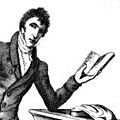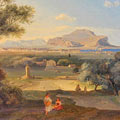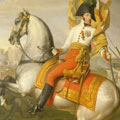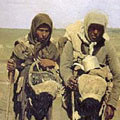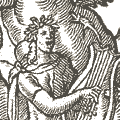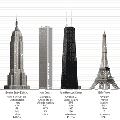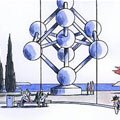Carle Vernet (1758-1835)
Weinig historische figuren zijn zo vaak geschilderd als Napoleon Bonaparte. Niet alleen tijdens zijn bewind maar ook tijdens de Restauratie bleven schilders historische gebeurtenissen vastleggen met Napoleon in het centrum van de aandacht. Tijdens de dictatuur en het Franse keizerrijk (1799-1814) was de „fotorealistische„ classicistische stijl de officiële stijl.
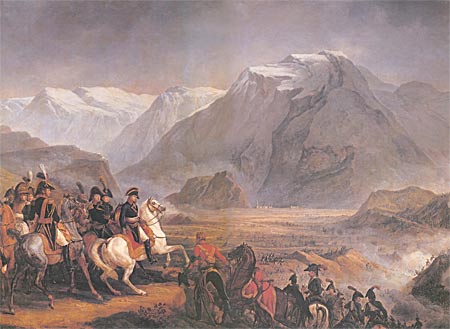
Carle Vernet
Napoleon op Monte Pipalo tijdens de Slag bij Rivoli op 14 januari 1797
Napoleon op Monte Pipalo tijdens de Slag bij Rivoli op 14 januari 1797
The morning of the 14th saw fierce fighting along the Trambasore Heights, as another Austrian column under Prince Heinrich of Reuss-Plauen attempted to turn the French right via the Rivoli gorge. By 11:00 things looked very bad for Bonaparte: Austrian dragoons had forced their way through the gorge, word arrived that another Austrian column under Colonel Franz Lusignan was cutting off his retreat south of Rivoli, and Alvinczi was on the Trambasore Heights urging his victorious battalions forward, though they were unformed by combat and rough terrain.
By a series of actions, the French managed to take advantage of this crucial mistake. Bonaparte, Joubert, and Louis Alexandre Berthier put together a well co-ordinated combined arms attack. A battery of 15 guns blasted the dragoons, while two columns of infantry, one for the gorge and one for the Trambasore Heights were led forward supported by cavalry under Charles Leclerc and Antoine Lasalle. The packed masses in the gorge fled when their own dragoons were driven over them in panic. And likewise the dispersed infantry on the Heights were unable to hold once French cavalry got in their midst. Lastly, Gabriel Rey‘s division and Claude Victor‘s brigade arrived and broke Lusignan‘s southern column with the loss of 3,000 prisoners.
By a series of actions, the French managed to take advantage of this crucial mistake. Bonaparte, Joubert, and Louis Alexandre Berthier put together a well co-ordinated combined arms attack. A battery of 15 guns blasted the dragoons, while two columns of infantry, one for the gorge and one for the Trambasore Heights were led forward supported by cavalry under Charles Leclerc and Antoine Lasalle. The packed masses in the gorge fled when their own dragoons were driven over them in panic. And likewise the dispersed infantry on the Heights were unable to hold once French cavalry got in their midst. Lastly, Gabriel Rey‘s division and Claude Victor‘s brigade arrived and broke Lusignan‘s southern column with the loss of 3,000 prisoners.

postzegel uit Congo met het schilderij van Carle Vernet
The next day Joubert led a successful pursuit of Alvinczi, all but destroying his columns, the remnants of which fled north up the Adige River valley in confusion. The Battle of Rivoli was Bonaparte‘s greatest victory at the time. The French lost 2,200 killed and wounded and 1,000 captured, while the Austrians suffered 4,000 killed and wounded, plus 8,000 men and 40 guns captured. One authority gives the French 5,000 and the Austrians 14,000 total losses. Mantua surrendered on 2 February. In March, Bonaparte launched an offensive to the east.
Bron: en.wikipedia.org
Bron: en.wikipedia.org

